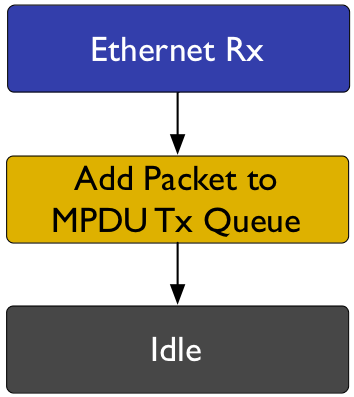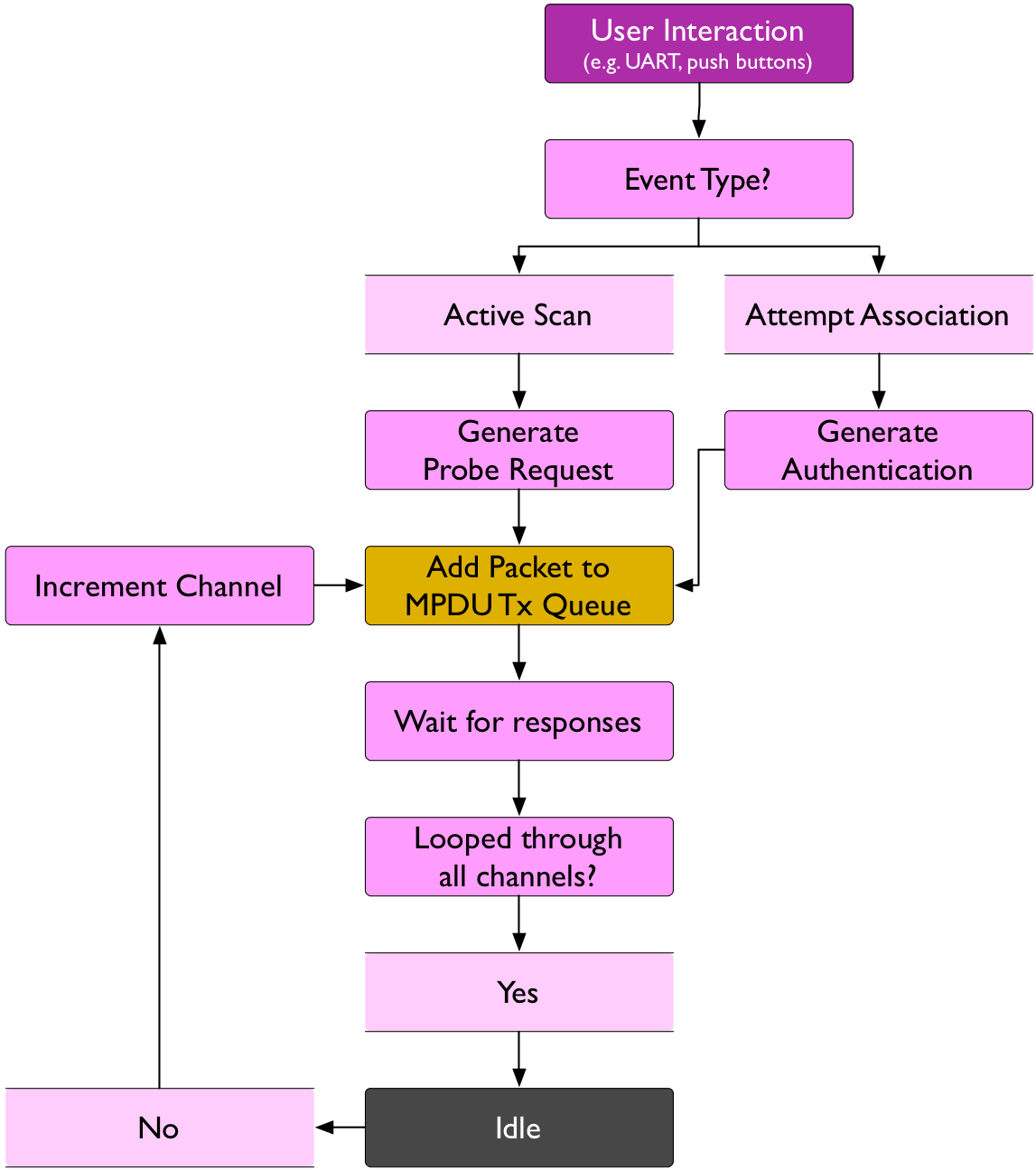802.11 Reference Design
- Download
- Changelog
- FAQ
- Architecture
Using the Design...
Benchmarks
- IFS Calibration
- Throughput
- Transmitter Characterization
- Receiver Characterization
- Pkt. Det. Min. Power Characterization
MAC
Upper-level
Lower-level...
- PHY
Experiments Framework...
- Packet Flow
- FPGA Architecture
- FPGA Resource Usage
- App Notes
- Other Resources
- License
- Changelog
Station
The station implementation in the Mango 802.11 Reference Design can associate and communicate with 802.11 access points (WARP or otherwise). The source and sink of traffic for the station is Ethernet. Because an AP expects the wireless MAC address of each station to match connected clients,

|
| Top-level view of STA States |
There are three broad classes of events that pull the STA implementation out of an idle state. Those classes are:
- Wireless MPDU Receptions
- Ethernet Frame Receptions
- User Interaction Events
In our implementation, each of these state transitions occurs via an interrupt.
Wireless MPDU Receptions

|
| MPDU Reception States |
The 802.11 station will deliver all data MPDUs from the AP to an Ethernet port on WARP v3. It will also honor the handshake process for associating with a network that is specified in the 802.11 standard. A visualization of this handshake is shown in the above state diagram.
Ethernet Frame Receptions

|
| Ethernet Reception States |
Ethernet receptions for an 802.11 station are very straightforward. All packets are delivered wirelessly to the associated AP.
User Interaction Events

|
| User Interaction Events |
The station code can interact with a user to trigger an active scan or attempt to associate with a particular SSID. The active scan will generate a list of surrounding APs and their capabilities (e.g. supported rates, SSID, channel, etc). This interaction currently takes place through a UART menu that can be accessed via USB.